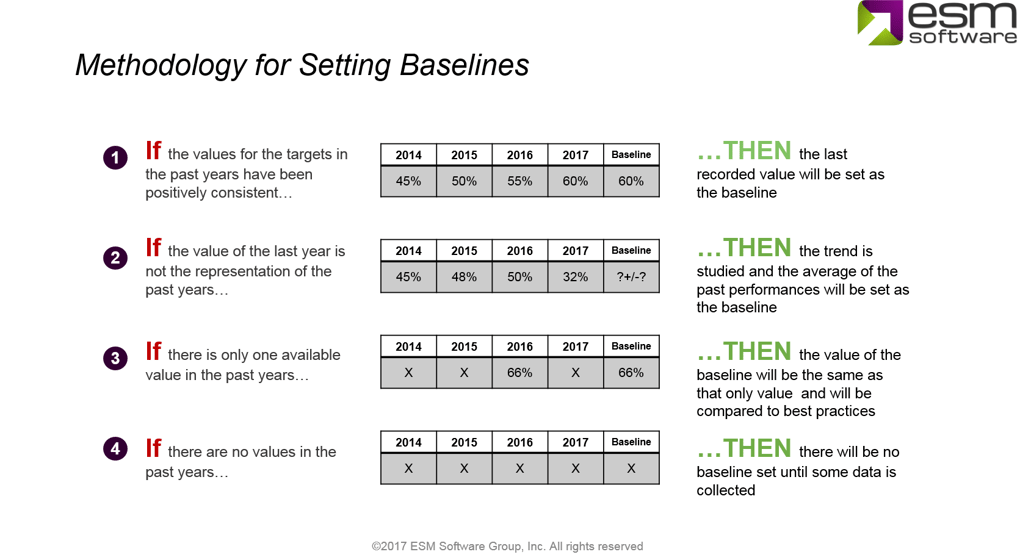Creating effective organizational KPIs requires multiple steps. Strategic planners must consider the intent of the KPI in relation to strategic objectives, how data is calculated, where data resides, who is accountable for collecting information, and how it is evaluated.
Once a KPI’s definition has been agreed upon by the senior leadership team, the next step is to collect the data and set targets. For Balanced Scorecards both new and old, many KPIs are newly created, and thusly their targets require creativity and flexibility. In these cases, target setting resembles an art rather than a science.
Other KPIs are likely already measured in some form. Any for-profit organization measures EBITDA or other financial measures. Customer survey data serves as a starting point for customer perspective measures. For organizations of a certain size, HR is probably collecting retention and attrition data today. These preexisting KPIs will offer an important building block for Balanced Scorecards, providing usable information for the senior leadership team and time savings for strategic planners.
KPIs with old data are also important because they give strategic planners an opportunity to leverage baseline data. Baseline data are past results that provide a comparison for future performance. In the context of target setting, strategic planners can use baselines as a starting point from which to iteratively increase targets.
Generally a good rule of thumb is to use around three years of baseline data. Too little data leaves a statistically insignificant sample size to work from. Too much baseline data can obscure critical trends within the past few years, sacrificing value for a larger sample.

The next step is to synthesize historical data into a single baseline. Rather than a simple average of annual data across the board, it is worthwhile to create a set of business rules that account for varying performance conditions, such as if there are consistent positive trends or gaps in data.
A standardized approach ensures KPI owners understand the methodology, and strategic planners are consistent across KPIs. The baseline is not the end of the journey to define your KPIs. The final step, is to use the baseline data to set ambitious-but-attainable targets.







